
Gregory Dale Bear was an American writer and illustrator best known for science fiction. His work covered themes of galactic conflict, parallel universes, consciousness and cultural practices, and accelerated evolution. His last work was the 2021 novel The Unfinished Land. Greg Bear wrote over 50 books in total.
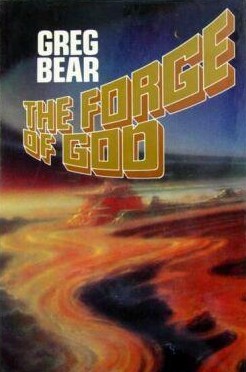
The Forge of God is a 1987 science fiction novel by American writer Greg Bear. Earth faces destruction when an inscrutable and overwhelming alien form of life attacks.
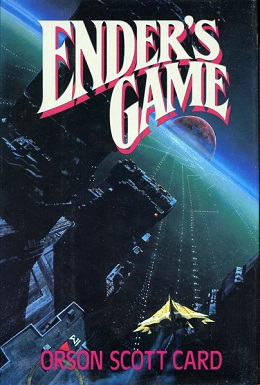
Ender's Game is a 1985 military science fiction novel by American author Orson Scott Card. Set at an unspecified date in Earth's future, the novel presents an imperiled humankind after two conflicts with an insectoid alien species they dub "the buggers". In preparation for an anticipated third invasion, Earth's international military force recruits young children, including the novel's protagonist, Andrew "Ender" Wiggin, to be trained as elite officers. The children learn military strategy and leadership by playing increasingly difficult war games, including some in zero gravity, where Ender's tactical genius is revealed.

The Memory of Whiteness is a science fiction novel written by Kim Stanley Robinson and published in September 1985.

Damien Francis Broderick is an Australian science fiction and popular science writer and editor of some 74 books. His science fiction novel The Dreaming Dragons (1980) introduced the trope of the generation time machine, his The Judas Mandala (1982) contains the first appearance of the term "virtual reality" in science fiction, and his 1997 popular science book The Spike was the first to investigate the technological singularity in detail.
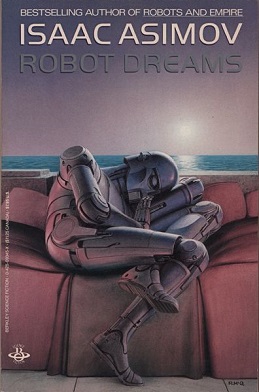
Robot Dreams (1986) is a collection of science fiction short stories by American writer Isaac Asimov, illustrated by Ralph McQuarrie. The title story is about Susan Calvin's discovery of a robot with rather disturbing dreams. It was written specifically for this volume and inspired by the McQuarrie cover illustration. All of the other stories had previously appeared in various other Asimov collections. Four of the stories are robot stories, while five are Multivac stories.

Anvil of Stars is a science fiction novel by American writer Greg Bear, a sequel to The Forge of God. The book was initially released in 1992.
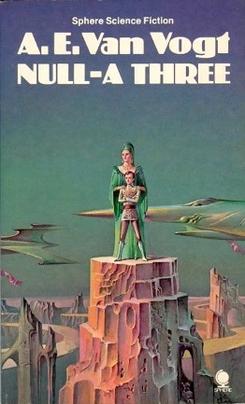
Null-A Three, usually written Ā Three, is a 1985 science fiction novel by Canadian-American writer A. E. van Vogt. It incorporates concepts from the General semantics of Alfred Korzybski and refers to non-Aristotelian logic.
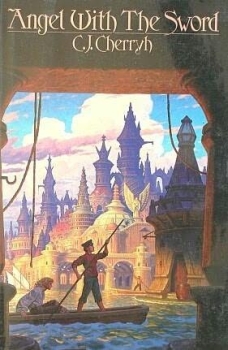
Angel with the Sword is a science fiction novel by American writer C. J. Cherryh, published in 1985 by DAW Books. It is set in Cherryh's Alliance–Union universe, and is the first book in the shared universe Merovingen Nights.
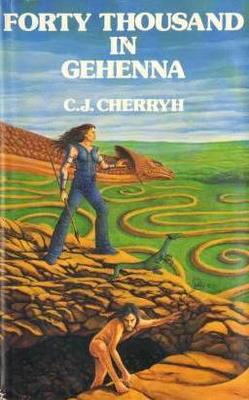
Forty Thousand in Gehenna, alternately 40,000 in Gehenna, is a 1983 science fiction novel by American writer C. J. Cherryh. It is set in her Alliance-Union universe between 2354 and 2658, and is one of the few works in that universe to portray the Union side; other exceptions include Cyteen (1988) and Regenesis (2009).

Software is a 1982 cyberpunk science fiction novel written by Rudy Rucker. It won the first Philip K. Dick Award in 1983. The novel is the first book in Rucker's Ware Tetralogy, and was followed by a sequel, Wetware, in 1988.

Serpent Mage (ISBN 0712616721) is a fantasy novel published in 1986 by Greg Bear., it is the sequel to The Infinity Concerto.

The White Abacus is a 1997 science fiction novel by Damien Broderick. It follows the story of Telmah Lord Cima who travels to Earth from a far-off world and becomes friends with a computer-augmented being called Ratio.

Transcension is a 2002 science fiction novel by Damien Broderick. It follows the story of lawyer Mohammed Kasim Abdel-Malik, whose body is placed in cryonic suspension and his mind used as a source for the artificial intelligence Aleph after he is killed.
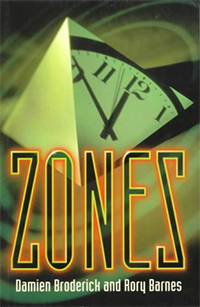
Zones is a 1997 young adult science fiction novel by Damien Broderick and Rory Barnes. It follows the story of Jenny who receives a phone call from another year.
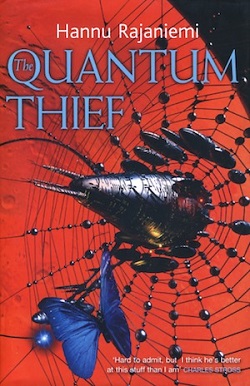
The Quantum Thief is the debut science fiction novel by Finnish writer Hannu Rajaniemi and the first novel in a trilogy featuring the character of Jean le Flambeur; the sequels are The Fractal Prince (2012) and The Causal Angel (2014). The novel was published in Britain by Gollancz in 2010, and by Tor in 2011 in the US. It is a heist story, set in a futuristic Solar System, that features a protagonist modeled on Arsène Lupin, the gentleman thief of Maurice Leblanc.
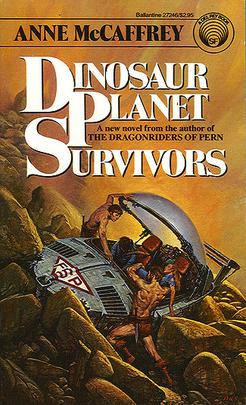
Dinosaur Planet Survivors or Survivors: Dinosaur Planet II is a 1984 science fiction novel by American writer Anne McCaffrey. It is the sequel to Dinosaur Planet (1978) and thus the second book in the Ireta series.

Nebula Awards 26 is an anthology of science fiction short works edited by James Morrow, the first of three successive volumes published under his editorship. It was first published in hardcover and trade paperback by Harcourt Brace Jovanovich in May 1992.

The Rift is a 2017 science fiction and literary fiction novel by English writer Nina Allan. It was first published in July 2017 in the United Kingdom as a trade paperback by Titan Books. It is the second book of a two-book deal Allan signed with Titan in 2015; the first is the second edition of her debut novel, The Race, published in 2016.

The Sorceress and the Cygnet is a fantasy novel by Patricia A. McKillip. It was first published in hardcover by Ace Books in May 1991, with a paperback edition following from the same publisher in January 1992. The first British edition was published in hardcover and trade paperback by Pan Books in June 1991, with a standard paperback edition following from the same publisher in May 1992. It was subsequently combined with its sequel The Cygnet and the Firebird into the omnibus collection Cygnet, issued in trade paperback by Ace Books in March 2007.



















